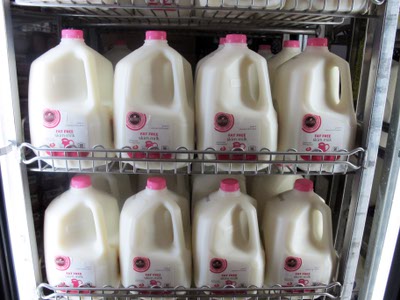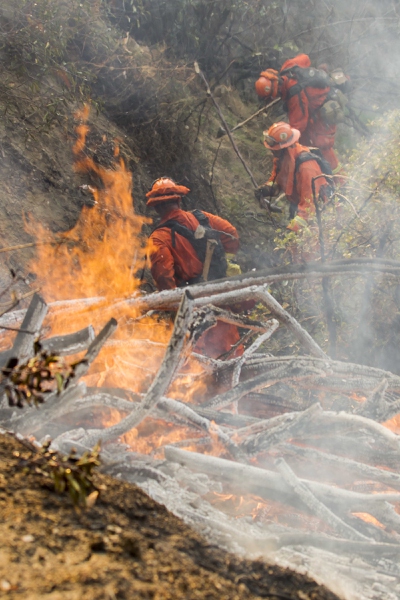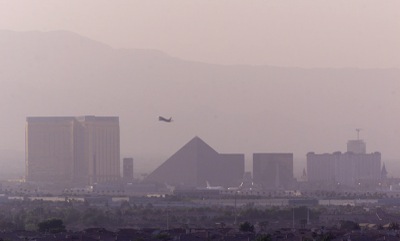Sunday, March 30, 2014 | 2 a.m.
Higher food prices, water bills and utility rates. Greater wildfire risk. Shrinking communities, fewer jobs and weakening economies.
Amid growing concern that the drought gripping the West isn’t history repeating itself but instead is a new normal brought about by climate change, the effects of the dwindling water supply in the region are beginning to become all too clear.
As a pattern of longer dry periods and shorter wet cycles continues, the effects will be felt across the region by millions of people from farms to cities, faucets to wallets.
More than 70 percent of the West — a zone spreading across 15 states — is experiencing some form of abnormal dryness or drought, with 11 drought-affected western and central states designated as primary natural disaster areas by the Agriculture Department.
Here’s what’s coming for residents of the West — or, in some cases, what’s in progress:
Agriculture and food prices
Snowpack in the Sierra Nevada is at 12 percent of the annual average, making the drought in California especially severe. With 2013 being the state’s driest year on record, Gov. Jerry Brown declared a drought emergency, imploring residents to cut water use by 20 percent. The State Water Project announced zero water allocation to agencies serving 25 million people and 750,000 acres of farmland.
The drought threatens to cripple California’s $44.7 billion agricultural industry, cutting yields and sending food prices soaring.
A recent food price inflation outlook issued by the USDA found the consumer price index rose by 1.4 percent in 2013, and food prices are expected to rise another 2.5 to 3.5 percent this year. Record-high beef prices, which rose 5.4 percent over the past year, are “here to stay.”
Wildfires
Drier conditions mean drier trees — which means better fuel for forest fires.
A rash of powerful, fast-moving wildfires made headlines in the past year, from Las Vegas’ Carpenter 1 fire that ravaged 20,000 acres on Mount Charleston to Arizona’s deadly Yarnell Hill fire.
As the drought persists, such events are expected to increase in size, intensity and frequency as moisture remains concentrated in the Rocky and Sierra mountain ranges. While surrounding northern states bask in precipitation, much of the Southwest misses out, leading to dangerously dry conditions.
“It’s looking like classic Dust Bowl-type pictures that are emerging, from Arizona into New Mexico, Texas and southern Colorado, up to about the San Juan Mountains,” said Kelly Redmond, a climatologist at Desert Research Institute.
Political
After decades of water wars, California, Nevada, Arizona, Colorado, Utah, Wyoming, New Mexico and Mexico are working to share Colorado River water.
The new era of cooperation crystallized in 2007, when the states agreed to a rationing system should Lake Mead’s elevation continue to drop.
The first of these shortage declarations, which would trigger cuts in water supplies to each state, could go into effect as early as next year. Further provisions will carry the region through several more years of decline on the river, but if the drought worsens and Lake Mead’s levels continue to drop, all bets are off. Once the reservoir hits 1,025 feet of elevation, just 80 below its current level, the states would be forced back to the bargaining table to negotiate more cuts.
Ecological
The drought doesn’t just affect humans — entire ecosystems feel the burn. As water levels shrink, nutrients, sediments and pollutants become more concentrated, hurting the health of surrounding ecosystems.
Desert wildlife become particularly susceptible to drought as ponds and similar sources of drinking water begin to disappear.
Similarly, cattle herds grazing on public land may be forced to curb their appetites as the Bureau of Land Management curtails foraging allotments as the amount of available water decreases.
While some creatures suffer, others thrive. Insect infestations are a common consequence of drought, allowing populations of destructive species to grow while old growth forests weaken. The effects can be devastating, affecting everything from carbon cycles to wildfires.
Air pollution
Droughts affect how we breathe as well as what we drink. Dusty, dry environments and wildfire outbreaks leave populations in affected areas vulnerable to air pollution. Without precipitation to clear the air, airborne particles like pollen, smoke and fluorocarbons accumulate in the atmosphere, irritating the lungs and bronchial passages, increasing the risk of acute respiratory infections and exacerbating chronic respiratory illnesses. Droughts can lead to the release of airborne toxins originating from freshwater cyanobacteria blooms, which have been associated with lung irritation and other adverse health effects.
Drinking water
Drinking water sources are among the most protected and will be the last to suffer. Major Southwestern cities have plans extending more than a decade covering where and how they’ll get their supply. But as supplies from mountain snowpack and rivers dwindle, tapping new sources to sate populations will have hefty price tags.
Locally, protecting our water supply in the face of drought has cost $817 million — the price of a third intake straw at Lake Mead. If the situation worsens, it could result in a controversial $3 billion plan to pump groundwater in from rural Nevada to feed the mouths (and lawns) of Las Vegas.
Elsewhere, dwindling water supplies could mean taxing ground reservoirs, costly construction on the Sacramento-San Joaquin Delta or building promising but controversial (and expensive) desalination plants to make seawater potable.




Join the Discussion:
Check this out for a full explanation of our conversion to the LiveFyre commenting system and instructions on how to sign up for an account.
Full comments policy